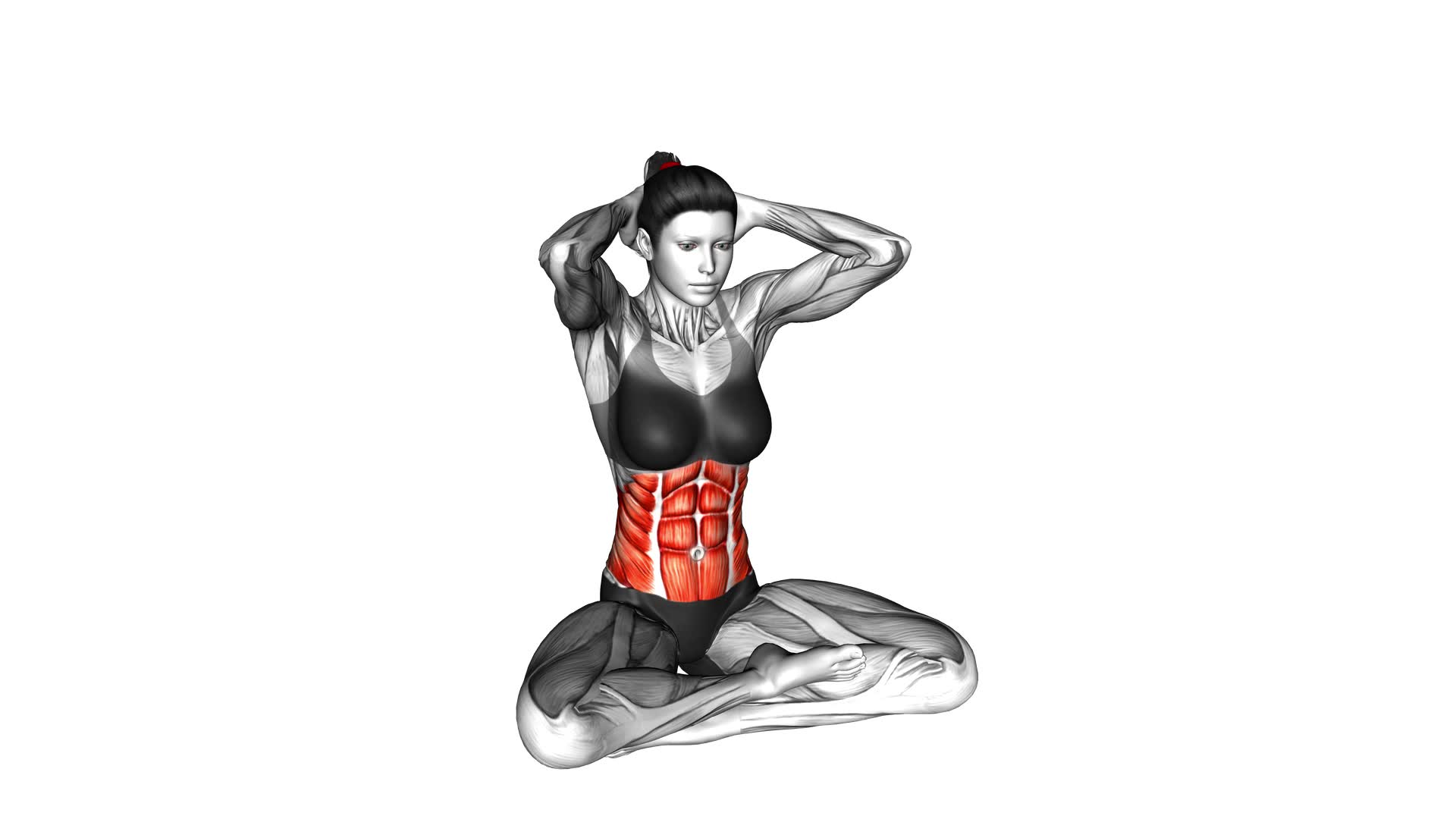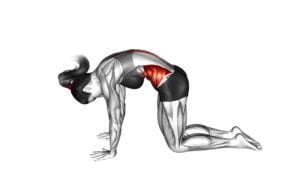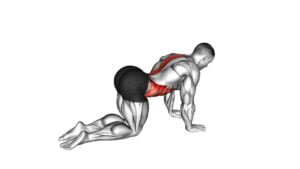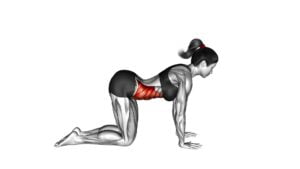Sitting Cat Cow Pose (female) – Video Exercise Guide & Tips

Are you looking to improve your flexibility and strengthen your core? Get ready to try the Sitting Cat Cow Pose!
Watch This Exercise Video
In this video exercise guide, we'll show you the proper alignment and technique for this pose. Whether you're a beginner or an advanced yogi, we've got modifications and tips to help you get the most out of this pose.
Avoid common mistakes and reap the benefits of this powerful exercise. Let's get started!
Key Takeaways
- Sitting Cat Cow Pose increases flexibility and mobility in the spine.
- It improves posture and alignment by engaging core and back muscles.
- The pose stretches the back, shoulders, and neck, enhancing blood circulation in the torso.
- Proper breath coordination and maintaining a steady and even breath pattern are essential for a successful practice.
Benefits of Sitting Cat Cow Pose
Experience the numerous benefits of the Sitting Cat Cow Pose to improve flexibility and posture. Regular practice of this pose can lead to a range of benefits for your body and mind.
One of the key advantages is increased flexibility. As you move through the gentle arching and rounding of your spine, you stretch and lengthen the muscles along your back, promoting greater flexibility and mobility.
Additionally, the Sitting Cat Cow Pose helps to improve your posture. By engaging the muscles in your core and back, this pose can strengthen the muscles responsible for maintaining proper alignment of your spine, leading to improved posture over time.
Another benefit of the Sitting Cat Cow Pose is the variations it offers. You can modify this pose to suit your individual needs and level of comfort. For example, you can perform the pose while sitting on a chair or a stability ball, making it accessible to people with limited mobility or balance issues. You can also add movements such as side bends or twists to further enhance the benefits. Exploring these variations allows you to target different areas of your body and customize your practice to suit your specific goals.
Incorporating the Sitting Cat Cow Pose into your routine can bring about significant improvements in flexibility, posture, and overall well-being. As you gain a deeper understanding of the benefits and variations of this pose, you can move on to learn about the proper alignment and technique to maximize its effectiveness.
Proper Alignment and Technique
To achieve proper alignment and technique in the Sitting Cat Cow Pose, follow these simple steps.
First, start by coming onto your hands and knees in a tabletop position, with your wrists directly under your shoulders and your knees under your hips. Place a blanket or cushion under your knees for added support if needed.
Next, engage your core muscles and inhale deeply as you arch your back, dropping your belly towards the floor. Lift your gaze and chest towards the ceiling, allowing your shoulder blades to come together. This is the Cow Pose.
Then, as you exhale, round your spine towards the ceiling, tucking your chin towards your chest. Allow your shoulder blades to separate and draw your belly button towards your spine. This is the Cat Pose.
Throughout the movement, it's important to maintain breath awareness. Inhale deeply as you move into the Cow Pose, filling your lungs with air. Exhale fully as you move into the Cat Pose, emptying your lungs completely. This breath awareness helps to deepen the stretch and promote relaxation.
Common misconceptions about the Sitting Cat Cow Pose include rushing through the movement and forgetting to engage the core muscles. Remember to move slowly and mindfully, focusing on the alignment of your spine and the engagement of your core.
Modifications for Beginners
How can you modify the Sitting Cat Cow Pose to make it more accessible for beginners? If you're new to yoga or still working on building strength and flexibility, there are several modifications and variations you can try to make the Sitting Cat Cow Pose more beginner-friendly. Here are three options for you:
- Use props: Place a folded blanket or bolster under your hands to elevate the floor. This will make it easier to maintain proper alignment and reduce strain on your wrists.
- Take it slow: Instead of moving through the full range of motion in the pose, start by gently tilting your pelvis forward and backward, focusing on the movement of your spine. Gradually increase the intensity as you become more comfortable.
- Adapt the position: If sitting cross-legged is challenging for you, try sitting on a yoga block or a folded blanket to elevate your hips. This will help to alleviate any discomfort and make it easier to maintain the pose.
By incorporating these beginner modifications and variations, you can gradually build up your strength and flexibility, making the Sitting Cat Cow Pose more accessible and beneficial for your practice.
Now, let's move on to some tips for advanced yogis to deepen their practice.
Tips for Advanced Yogis
If you're an advanced yogi looking to deepen your practice, here are some tips to enhance your experience with the Sitting Cat Cow Pose.
To take your practice to the next level, you can try advanced variations of this pose. One option is to incorporate arm movements into the pose. As you move into cow pose, extend your arms forward and then lift them overhead as you transition into cat pose. This adds an extra challenge to your core and upper body strength.
Another advanced variation is to lift your knees off the ground while performing the cat and cow movements. This requires greater stability and balance.
In addition to advanced variations, focusing on your breath can further enhance your experience with the Sitting Cat Cow Pose. As you move into cow pose, inhale deeply and expand your chest, feeling the breath fill your lungs. Then, as you transition into cat pose, exhale fully and contract your abdominal muscles, squeezing out all the air. This conscious breath control not only helps you to stay present in the pose, but also adds a meditative element to your practice.
Remember to listen to your body and only attempt advanced variations if you feel ready and comfortable. Always maintain proper form and alignment to avoid any injuries.
Common Mistakes to Avoid
When practicing the Sitting Cat Cow Pose, it's important to be aware of common mistakes to avoid. These mistakes can prevent you from fully benefiting from the pose and may even lead to discomfort or injury. Here are three common mistakes to watch out for:
- Rounding the back too much: One of the main purposes of the Sitting Cat Cow Pose is to gently stretch and strengthen the spine. However, if you round your back excessively during the pose, you may strain your neck and shoulders. To avoid this, focus on maintaining a neutral spine and only move within your range of motion.
- Forgetting to engage the core: The Sitting Cat Cow Pose not only stretches the spine but also helps to activate the core muscles. It's important to engage your abdominal muscles while performing the pose to support your spine and maintain stability. By contracting your core, you can prevent excessive arching or sinking in the lower back.
- Neglecting variations and props: The Sitting Cat Cow Pose can be modified to suit your individual needs and abilities. Using props such as blankets or blocks can help you find proper alignment and make the pose more accessible. Additionally, exploring variations of the pose, such as adding a twist or side bend, can provide additional benefits and prevent monotony in your practice.
Frequently Asked Questions
Can Sitting Cat Cow Pose Help With Digestion and Bloating?
Sitting cat cow pose can indeed help with digestion and bloating. By incorporating gentle spinal movements and deep breathing, this pose stimulates the digestive system and improves blood flow to the abdominal area. It also helps to relieve stress, which can often contribute to digestive issues.
The benefits of sitting cat cow pose for digestion include increased flexibility of the spine and improved digestion and elimination. So, incorporating this pose into your routine can provide relief from bloating and promote a healthier digestive system.
Can Sitting Cat Cow Pose Improve Posture and Relieve Back Pain?
Sitting Cat Cow Pose is a great exercise for improving posture and relieving back pain. By moving through the spinal flexion and extension, this pose helps to strengthen the muscles in your back and abdomen, which can provide support and alleviate discomfort.
Additionally, the gentle stretching involved in this pose can improve flexibility in your spine.
Is It Safe to Practice Sitting Cat Cow Pose During Pregnancy?
When you're pregnant and considering practicing yoga, it's important to know if it's safe to do sitting cat cow pose.
This pose can be modified during pregnancy to accommodate your changing body. It can help improve posture and relieve back pain, but it's crucial to listen to your body and avoid any discomfort.
Consulting with a prenatal yoga instructor is recommended to ensure you're practicing safely and receiving proper modifications for cat cow pose.
Can Sitting Cat Cow Pose Help With Menstrual Cramps and Discomfort?
Sitting cat cow pose can indeed help with menstrual cramps and discomfort.
This pose, when practiced regularly, can aid in hormone regulation, which can help alleviate some of the symptoms associated with menstruation.
Additionally, sitting cat cow pose can also help reduce pelvic pain by stretching and strengthening the muscles in the pelvic area.
How Long Should One Hold Each Position in Sitting Cat Cow Pose?
When practicing sitting cat cow pose, it's important to know how long to hold each position. Holding each position for about 5-10 seconds is a good starting point. This allows your body to fully benefit from the core-strengthening benefits of the pose.
Conclusion
In conclusion, the sitting cat cow pose is a wonderful exercise for women that offers numerous benefits. This includes improved spine flexibility, increased core strength, and reduced stress.
By maintaining proper alignment and technique, beginners can ease into this pose with modifications. Advanced yogis, on the other hand, can challenge themselves with deeper stretches.
Remember to avoid common mistakes and listen to your body's limits. By incorporating this pose into your yoga routine, you will contribute to a healthier and more balanced body and mind.

Author
Years ago, the spark of my life’s passion ignited in my mind the moment I stepped into the local gym for the first time. The inaugural bead of perspiration, the initial endeavor, the very first surge of endorphins, and a sense of pride that washed over me post-workout marked the beginning of my deep-seated interest in strength sports, fitness, and sports nutrition. This very curiosity blossomed rapidly into a profound fascination, propelling me to earn a Master’s degree in Physical Education from the Academy of Physical Education in Krakow, followed by a Sports Manager diploma from the Jagiellonian University. My journey of growth led me to gain more specialized qualifications, such as being a certified personal trainer with a focus on sports dietetics, a lifeguard, and an instructor for wellness and corrective gymnastics. Theoretical knowledge paired seamlessly with practical experience, reinforcing my belief that the transformation of individuals under my guidance was also a reflection of my personal growth. This belief holds true even today. Each day, I strive to push the boundaries and explore new realms. These realms gently elevate me to greater heights. The unique combination of passion for my field and the continuous quest for growth fuels my drive to break new ground.







